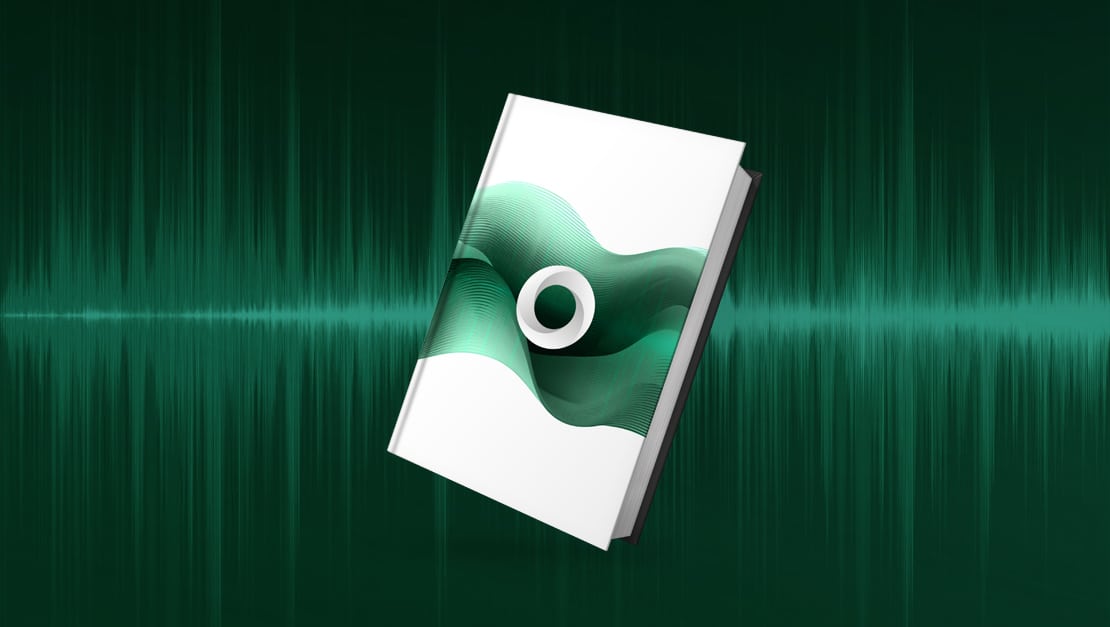Automatic speech recognition, or ASR for short, is a technology that converts spoken language into written text, making communication between humans and machines easier.
Not only is ASR used to facilitate communications with machines, but this technology is being used in everyday applications, such as real-time transcriptions and caption generators on social media apps like Instagram and TikTok. Thanks to the growing accuracy of emerging ASR platforms, this technology is becoming more and more accessible for everyday use, but its applications in business settings are transforming how we work.
In this blog post, we’ll delve deeper into ASR, including looking at how it works, its various applications, the impact of ASR across various use cases, and how aiOla is using the technology to streamline mission-critical tasks in certain industries.
What Is Automatic Speech Recognition (ASR) and How Does it Work?
The automatic speech recognition process is well-orchestrated, yet complex. Once spoken language is captured, it undergoes specific processing to convert the voice to text. While the process itself is invisible to the naked eye, there’s a lot that goes into turning speech into text. Here’s a brief overview of what the process looks like:
- Speech signal processing: Raw audio is processed to enhance its characteristics, making it easier to gather language data.
- Feature extraction: The signal is analyzed for various phonetic elements, identifying features that can be transcribed into words.
- Acoustic modeling: Using mathematical models, the relationship between sounds and features, or words, starts to come together in this stage. These models are trained on vast datasets to offer an accurate result.
- Language modeling: Next, the audio goes through a process of looking at linguistic probabilities and word sequences, offering context to the sound and also improving the overall accuracy.
- Decoding and transcription: Finally, after various types of analysis, an ASR system deciphers the most probable word sequence based on the language and acoustic models, resulting in a written text that’s accurately based on the audio source.
Key ASR Technologies
Automatic speech recognition models encompass several different technologies, each one contributing to enhancing the accuracy and efficiency of these platforms. Here, we’ll explore the fundamental technologies that define ASR to better understand the systems used to extract written words from speech.
Hidden Markov Models (HMMs)
HMMs are a statistical model that relies on machine learning (ML) to uncover sequencing in an input. When used with audio, HMMs work to observe the relationship between an acoustic signal and underlying linguistic units, which helps approximate the outcome of the speech.
Deep Learning and Neural Networks
Deep neural networks, specifically recurrent and convolutional architectures, allow ASR platforms to learn the intricacies and patterns of speech data. This helps the text become more accurate and robust.
Natural Language Processing (NLP)
NLP is essential to ASR outputs, as it helps integrate the context of words and language with understanding, further enhancing the accuracy levels of transcriptions. With NLP, ASR systems can capture not only the words said aloud in speech, but also the intent and meaning behind them.
Speaker Diarization
With speaker diarization technology, the focus is on distinguishing between multiple speakers in a conversation. This is essential for applications that need speaker-specific data, such as meeting transcription or AI assistants that are voice-controlled.
End-to-end ASR Systems
An end-to-end ASR system combines different stages of a traditional ASR pipeline into a single integrated model. These systems have become more popular due to increased computing power and vast quantities of training data, and rely on technologies like HMMs and deep learning to offer better performance while relying on less manual engineering.
ASR Applications: How Is it Used?
The voice recognition market reached nearly $12 billion in 2022 and is expected to grow to nearly $50 million by 2029, highlighting the massive increase in demand for ASR-driven technologies.
Today, ASR is used in many different use cases and applications, ranging from high-level business and data collection to everyday technologies like virtual assistants. ASR is versatile enough to appeal to all types of users of any technological background, which is why it’s truly reshaping the digital landscape. Let’s look at some of its most common applications.
Voice Command Systems
From smart home systems to in-car navigators, ASR plays a pivotal role in voice command systems. These systems are activated by voice and enable users to interact with a device through spoken commands alone. Users can do things like initiate phone calls, navigate to an address, or change the temperature using only their voice, with ASR turning words into actions.
Transcription Services
ASR has changed the way transcription platforms and services operate. Transcription platforms are used in several fields, such as journalism, legal offices, medical care, business, and in education as well. With ASR technology, language can be transcribed into text a lot quicker, easier, and with higher accuracy, turning manual note-taking into a much more efficient affair.
Voice Search and Virtual Assistants
Voice assistants like Siri or Alexa use ASR to turn commands into reminders, answers to voiced questions, or completed tasks on a mobile device. 50% of US consumers use voice search on a daily basis. ASR technology makes this possible by enabling virtual assistants to search the internet or trigger an action through speech commands alone.
Accessibility Tools for Differently-abled
When humans can interact with technology through voice alone and completely hands-off, these systems become more accessible to those with impairments. ASR is what allows differently-abled people to engage with technology, fostering a sense of independence and inclusivity in multiple digital interactions.
Customer Service and Call Centers
ASR can filter and automate call handling in a call center, making customer service more intuitive and efficient. Calls can be better routed to the right agents based on data gathered from the caller through speech, which works to both improve the level of service and optimize workflows. An analysis by McKinsey shows that ASR tools can drastically improve customer service in call centers by reducing handle time, improving self-serve options, and creating better interactions.
Language Translation
Aside from just transcribing speech to text, when paired with translation software, ASR is instrumental in converting one language to another. This can facilitate cross-cultural communication and break down language barriers in industries like tourism and even business settings.
Challenges in Automatic Speech Recognition Technology
The technologies that fuel ASR have made significant strides over the years, however, there are still challenges that underscore the intricacies of turning spoken language into text, whether it’s variations in speech, noise, or becoming more accurate in identifying specific speakers. Here are some of the more common challenges faced by ASR systems.
Accent and Dialect Variations
Accents and dialects can make it more difficult for certain ASR systems to accurately pick up spoken language. Systems need to be adapted to recognize diverse linguistic nuances, which can be challenging for emerging technology. Without addressing this challenge, an ASR system risks remaining limited and ineffective for global users.
Noise and Environmental Factors
Acoustic environments can be a significant hurdle in getting reliable ASR results. For example, picking up sounds in a busy work environment or even in public spaces with a lot of background conversations can make it tricky to isolate the target speech.
Speaker-Dependent vs. Speaker-Independent Systems
While speaker-dependent systems rely on identifying the voice of one speaker, speaker-independent systems can pick up vocal demands from any speaker. However, accommodating a variety of speakers in real-world scenarios can be difficult and require more advanced vocal identification solutions.
Handling Homophones and Ambiguous Phrases
The way we speak isn’t always straightforward, and for ASR systems to remain accurate, they need to be able to decipher the meaning behind homophones, ambiguous phrases, slang, or even words with multiple meanings. Resolving these ambiguities and accounting for nuance would make an ASR output more reliable.
Continuous Learning and Adaptation
ASR systems need to continuously learn up-to-date data to remain relevant. As language is fluid and new jargon gets introduced all the time based on emerging technologies, ASR systems need to stay relevant by basing their language models on new data all the time. This continuous learning is what will help this technology remain adaptable to new linguistic situations.
Vocabulary Limitations
ASR alone has significant limitations when it comes to the vocabulary most systems understand. Many ASR platforms aren’t specific enough, making it difficult or almost impossible to pick up targeted languages like business-related jargon. In many business contexts, ASR systems may be too limited to make a real impact.
The Impact of ASR on Various Industries
At the intersection of artificial intelligence (AI) and ASR lies the ability to create more integrative platforms where NLU and voice-centric interfaces meet, When paired with other technologies like NLU or Speech AI, ASR is breaking new ground in many industries. Looking at how ASR is used in practice in different businesses, we can see just how transformative this technology can be.
Personalized Customer Engagement with Nvidia
Nvidia Riva is an ASR platform that enables users to create real-time conversational AI pipelines. Fueled by AI and ASR technologies, Riva can be deployed in various applications to help make the customer experience more tailored and engaging. By using ASR and AI to encourage more valuable conversations, businesses can gather high-quality data from customer interactions to make future adjustments that tailor service to unique needs.
Automated Transcription in the Workplace
During the height of the COVID-19 pandemic, Zoom meetings became the norm. ASR played an important role in this videoconferencing program by offering captions and transcriptions for live meetings using ASR. This allowed employees who were out sick to catch up on meetings later on through a transcription, while simultaneously making digital meetings more accessible for those with hearing impairments.
Driving Safer with Apple CarPlay
Apple CarPlay is just one common example of how vehicles are being made safer using ASR, NLU, and AI technology. 68% of drivers use voice assistant technology when driving, and with Apple CarPlay and similar applications, drivers can speak to make phone calls, send a message, navigate, or change the song, keeping their eyes on the road and hands on the wheel. Without technology like ASR and speech-to-text, this wouldn’t be possible.
aiOla: Using ASR to Optimize Mission-Critical Tasks
As an AI-driven speech platform, aiOla uses ASR as one of the technologies that enable it to transcribe speech and turn it into automated workflows. aiOla helps businesses across various industries gather critical data and complete tasks just with the power of voice.
Through a combination of different technologies like ASR, NLU, and others, aiOla’s platform helps businesses automate manual tasks and gather otherwise lost data through speech. Noticing the shortcomings of ASR platforms on their own, aiOla has combined the technology with NLU, developing ASRU², dramatically boosting our ability to understand language as it’s spoken and picking up on industry jargon using our patented keyword spotting feature. The platform can understand over 100 languages as well as many different accents, dialects, and jargon while functioning in any acoustic environment, making it highly accurate and reliable.
To better grasp its capabilities, here’s a look at how it works in different working scenarios:
- In food manufacturing, aiOla helps companies increase production uptime while remaining safer by staying hands-free and compliant. Food manufacturers can inspect goods and machinery much more quickly, removing inefficiencies and reducing downtime.
- Fleet management companies using aiOla have managed to increase efficiency and collaboration while ensuring their drivers stay safe by keeping their eyes on the road and inspecting vehicles quicker for optimal maintenance. Manual operations like truck inspections can be cut down from 15 minutes to as little as 60 seconds.
There are many other instances where aiOla can help cut down on manual tasks to increase efficiency, such as in logistics, supply chain management, and many types of manufacturing. Through utilizing advanced ASR systems paired with other speech and language-based tools, aiOla enables companies to improve workflows with little to no learning curve, making onboarding straightforward for all stakeholders.
Harnessing the Power of ASR for Better Workflows
As we’ve seen with ASR’s ability to strengthen many workflows, from customer service to fleet management and food safety, and even more personal tasks like hands-free commands in a car or with a smart home device, the technology is helping make our lives more efficient. By reducing our reliance on these manual tasks, the possibility for error is also diminished, which has a significant impact when it comes to things like food safety or operating a vehicle.
aiOla’s platform helps ensure that employees on a production line, at work in a vehicle, or on the warehouse floor remain safe while optimizing their workflows for peak productivity. Without ASR, automating these tasks through speech simply wouldn’t be possible.
Book a demo with an aiOla expert to see how your business can start to benefit from technologies like ASR in your daily operations.
FAQs








